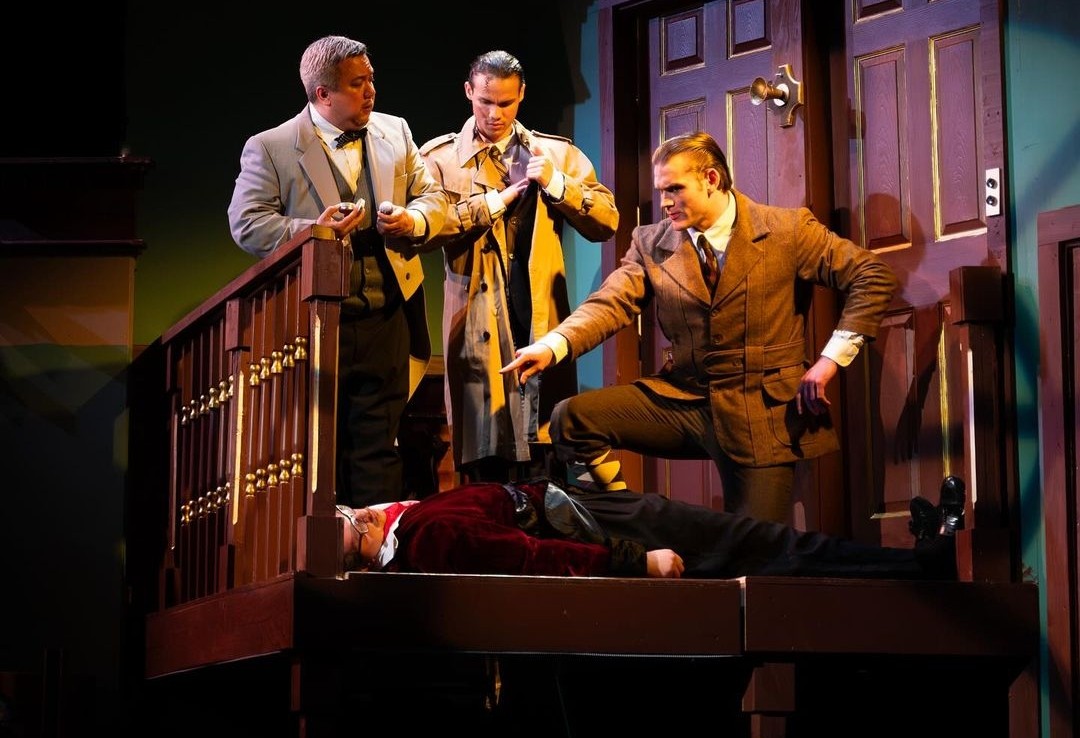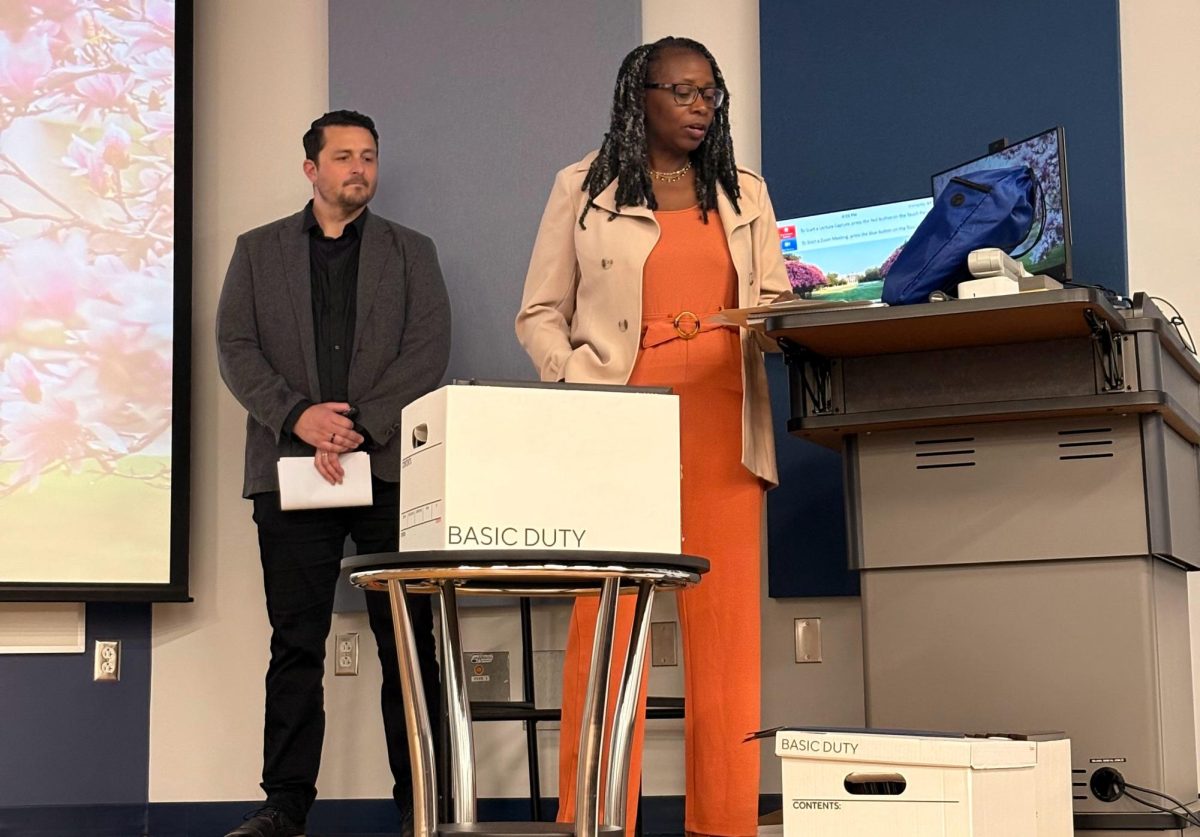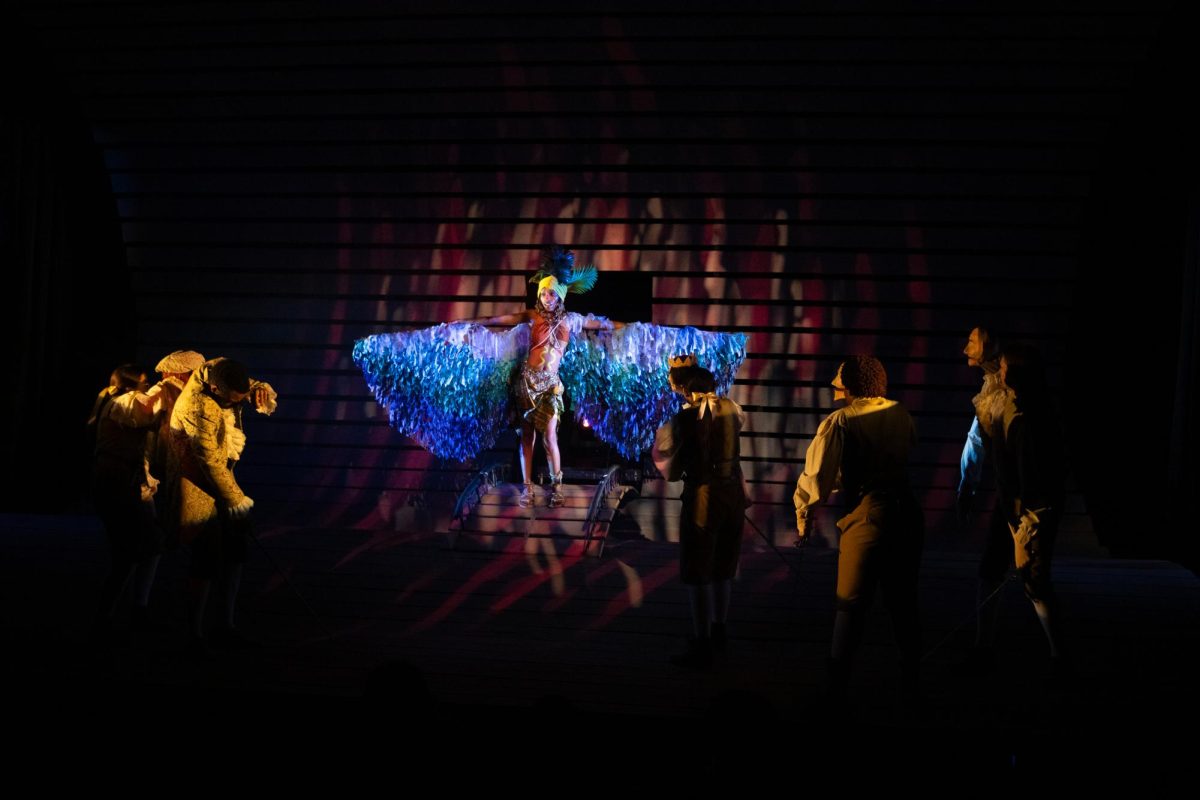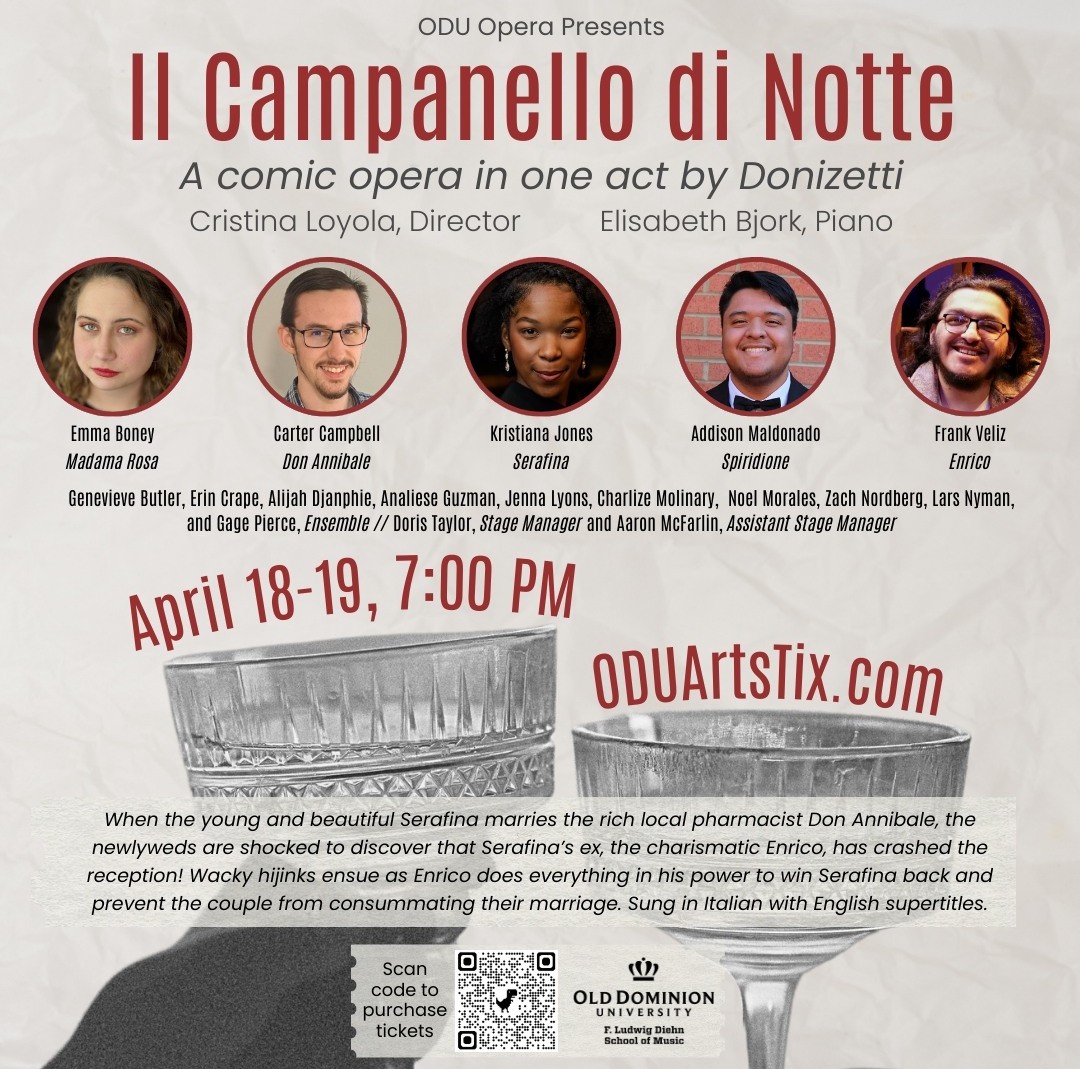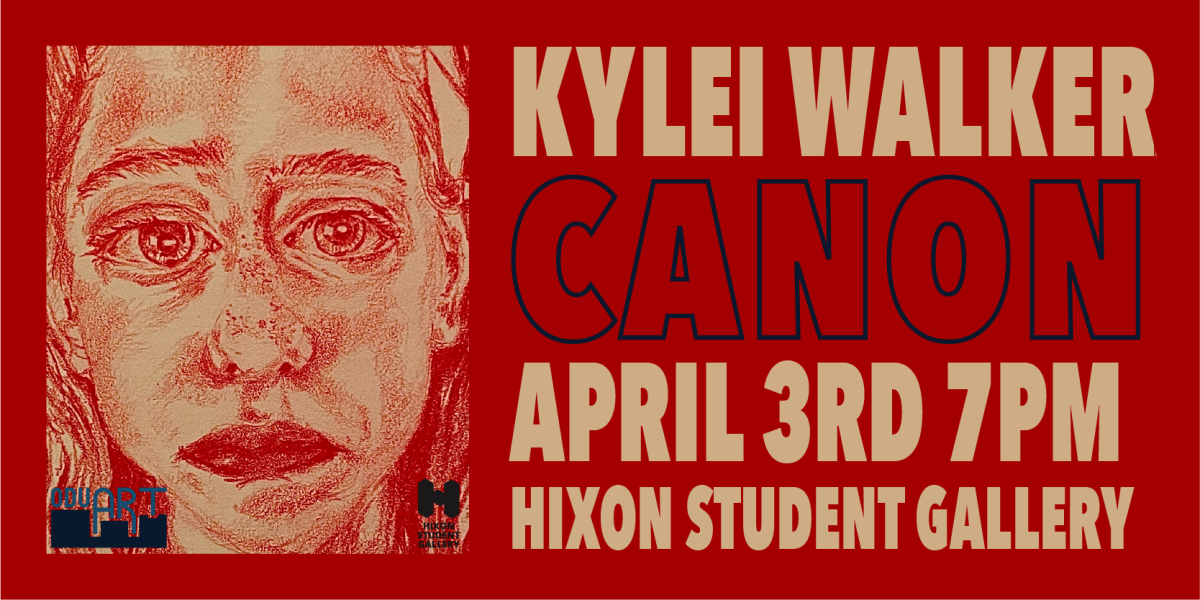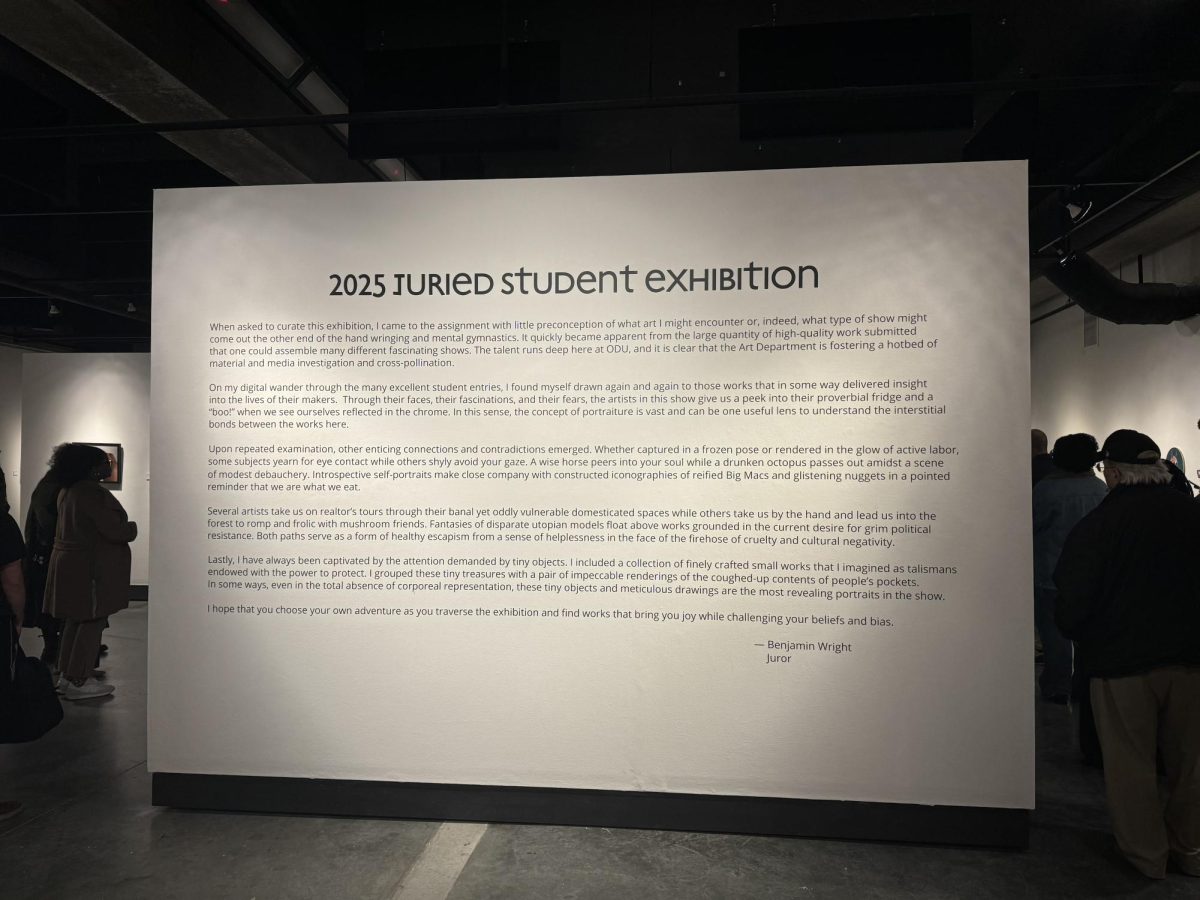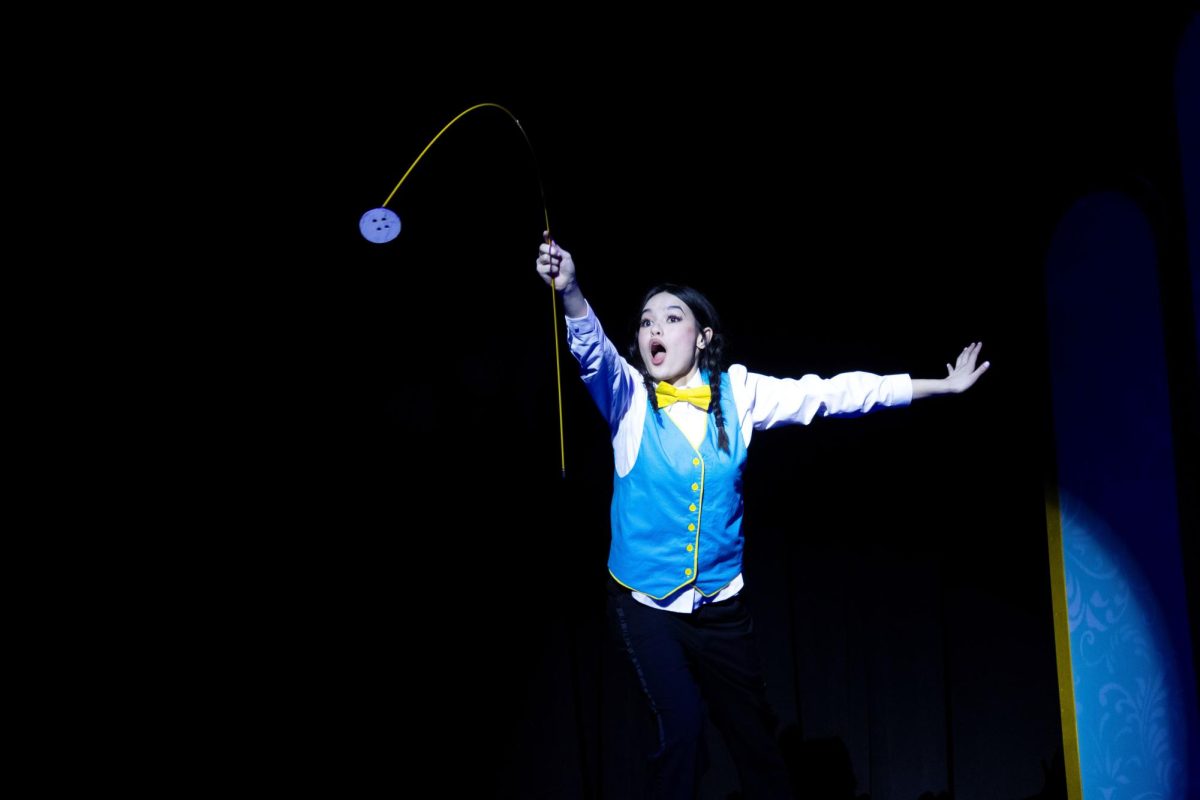No one wants to be a part of a murder case, especially at Haversham Manor. Originally written by Henry Lewis, Jonathan Sayer and Henry Shields, “The Play That Goes Wrong” is a total disaster in the best way possible.
Laughter overflowed in the Goode Theatre on Apr. 4 at the play’s debut. Director Steve Earle, whom ODU theater production fans may recognize from past directorial projects such as “The Burial at Thebes” and “Reasons to Be Pretty,” certainly found his inner Agatha Christie for this production. That is, if Agatha Christie wrote a metadrama inspired by “The Three Stooges.”
The cast of “The Play That Goes Wrong” transformed into their roles as the Cornley Drama Society for opening night as they debuted their murder mystery play. Charles Haversham, played by Avi Raschdorf, was found dead in his estate. Cause of death: unknown. The theater lit up red with a stinging sound effect, quickly interrupted by party music. Incorrect sound effects and songs played throughout the show, most of the time off cue. The character in charge of lights and sound, Trevor, played by Tahji McCombs, was in his own world the entire time, lifting weights and drinking Red Bull.
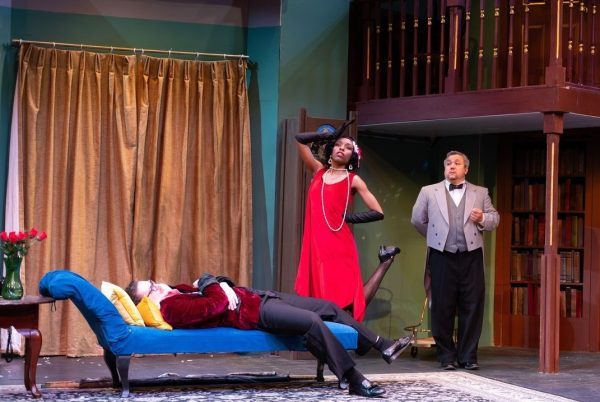
Charles’ fiance, Florence Colleymoore, played by Lakasia Moore, plays the part of an emotional train wreck dolled up in a red dress and pearls, a costume straight out of the 1920s. Her secret is revealed early in the show: she is having an affair with Charles’ brother, Cecil Haversham, played by Taylor Tousignant. In scenes where Florence is trying to kiss Cecil, he leans away in disgust, completely avoiding the woman he is supposedly secretly in love with.
Cecil was a fan favorite. He expressed just about every word he said with full, dramatic body gestures, even to represent simple words. As it was Tousignant’s character’s first time in a show, he didn’t take it very seriously. He was very engaging with the audience, often laughing and joking with them.
On the other hand, some characters played their roles very professionally. Adrian Rivera, who played the parts of the director Chris and Inspector Carter, never broke their character’s serious nature.
“There were a couple moments when I was really, really close to breaking,” said Rivera. “I had to play mind games with myself.”
The same could not have been said about the character Jonathan, who plays the deceased Charles– laughs were all over the room. From handing letters to other members of the cast to breaking the rail of the balcony, Charles was doing everything besides acting dead. One of the most comical scenes in the entire show was when powder exploded onto Charles’ face, causing the ‘deceased’ to choke and fall off the second-story balcony.
The show was truly something out of Monty Python, and even the cast will tell you that.
With the play set in England, the cast spoke in accents. Many actors found it difficult to speak this challenging dialect at first. Moore mentioned that she watched “Spanish Inquisition” and “The Black Knight” and took notes on the accents, acting, characterization, and voices to help her develop the characters of Sandra and Florence.
“My character is very, very over the top. She’s very confident. I think she’s borderline obsessed with herself; she just wants to be in the spotlight, and she doesn’t care for anyone else who’s on stage. She’s only worried about herself; she is hoping she’s going to be the next big star in this play,” said Moore.

Absolute chaos made up part one of the play. Some scenes that went wrong were Sandra being knocked out cold by a door, Charles’ constantly breaking character and mixing up scenes, Perkins (played by Thomas Salerno) doing a roundelay because he forgot his line, and Thomas Colleymoore (played by Ian Turner) and Cecil breaking out in a sword fight. Along with that, the theater filled with smoke multiple times, pictures and wall decor popped straight off the walls, and just about every character spits out ‘whiskey’ at some point.
From first glance at the set, there was clearly a great deal of work put into it. Austin Douglas, a member of the set design crew, explained that “it required cutting wood, measuring [materials] out, putting the wood together [and using] saws, screw guns, nail guns, staple guns, painting and even arts and crafts.”
The set seemed to be a character itself, adding its own satire throughout the performance. It truly felt like watching magic tricks play out, but behind the scenes, magnets, counterweights and rigging were used to create a perfectly unstable set.
As Trevor started to fix the lights at the end of intermission, he was painfully electrocuted, which announced the start of part two.
If the audience was under the assumption that the play would be more calm and professional post-break, they were wrong. Chaos is too mild of a word to use to explain it. There were more murders, smoke and late cues. People were stuffed inside clocks, and Annie, played by Kenzie Moyers, was knocked out while filling in for the role of Florence.
Once Sandra and Annie were conscious again, they broke out into a lengthy fight for the role of Florence that included locking each other behind doors and elbow jumping, which resulted in Sandra being tied and gagged and therefore unable to compete.
The wildest event of the night was yet to happen. The entire second story of the set collapsed while Inspector Carter and Thomas Colleymoore were still on it.
“Normally you would think that for something like that, we had so much time to practice, but we didn’t,” said Rivera. “Sliding down is all improv; there’s no set way we fall. When I fall, I genuinely bust my ass every night. And I have hurt myself a couple times.”
Blood, sweat and tears quite literally went into the making of this play, but from the audience reaction, it definitely seemed worth it. There was rarely a moment when the theater was silent; the audience’s laughter and enjoyment caused just as much commotion as the play itself.
“The Play That Goes Wrong” is nothing I’d ever want to be a part of, but it’s definitely a show I would watch over and over again. Each performance was individual, unique and perfectly casted. The show will continue to run Apr. 11–14, and I strongly encourage everyone to attend before it’s too late.


